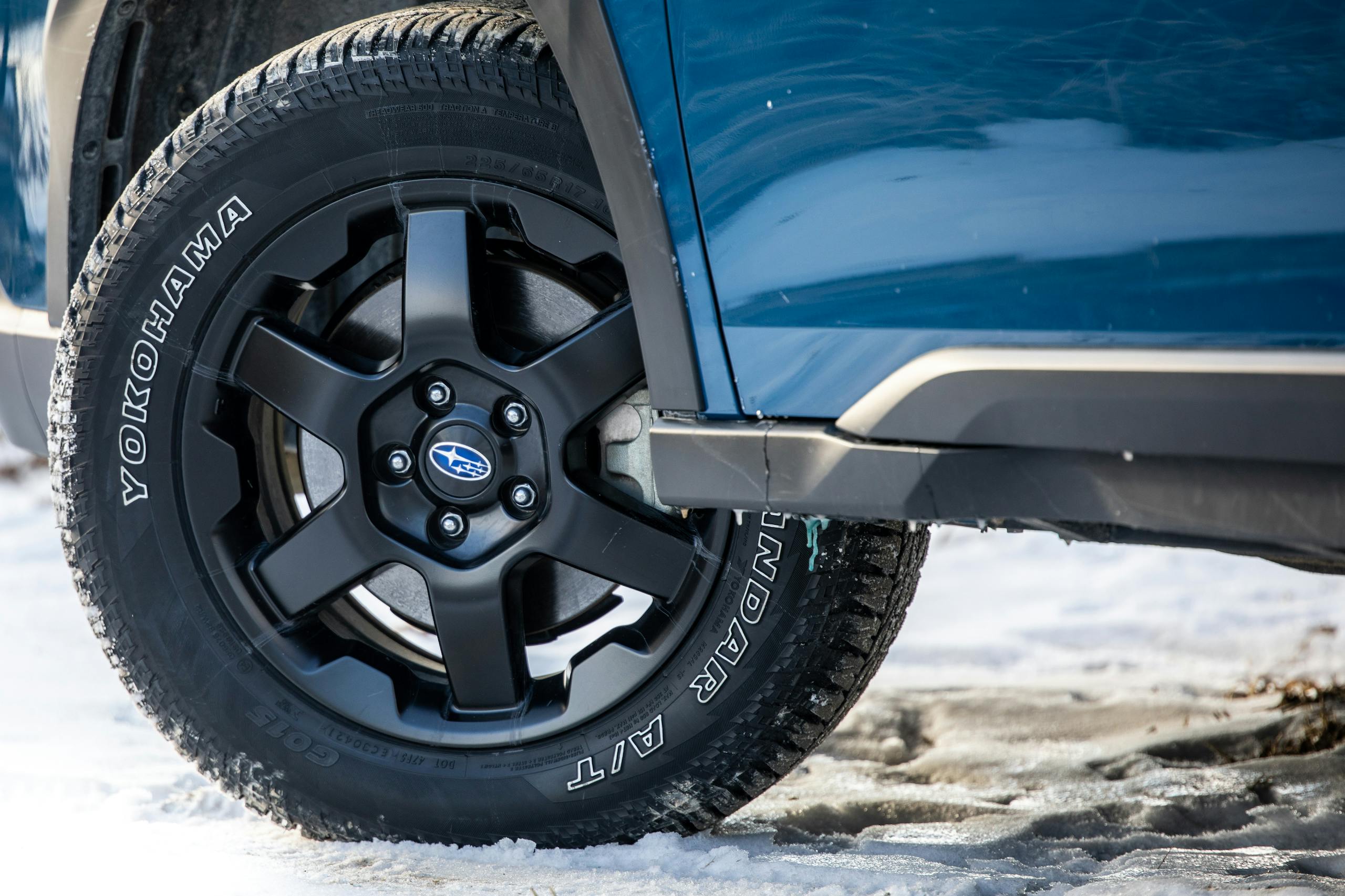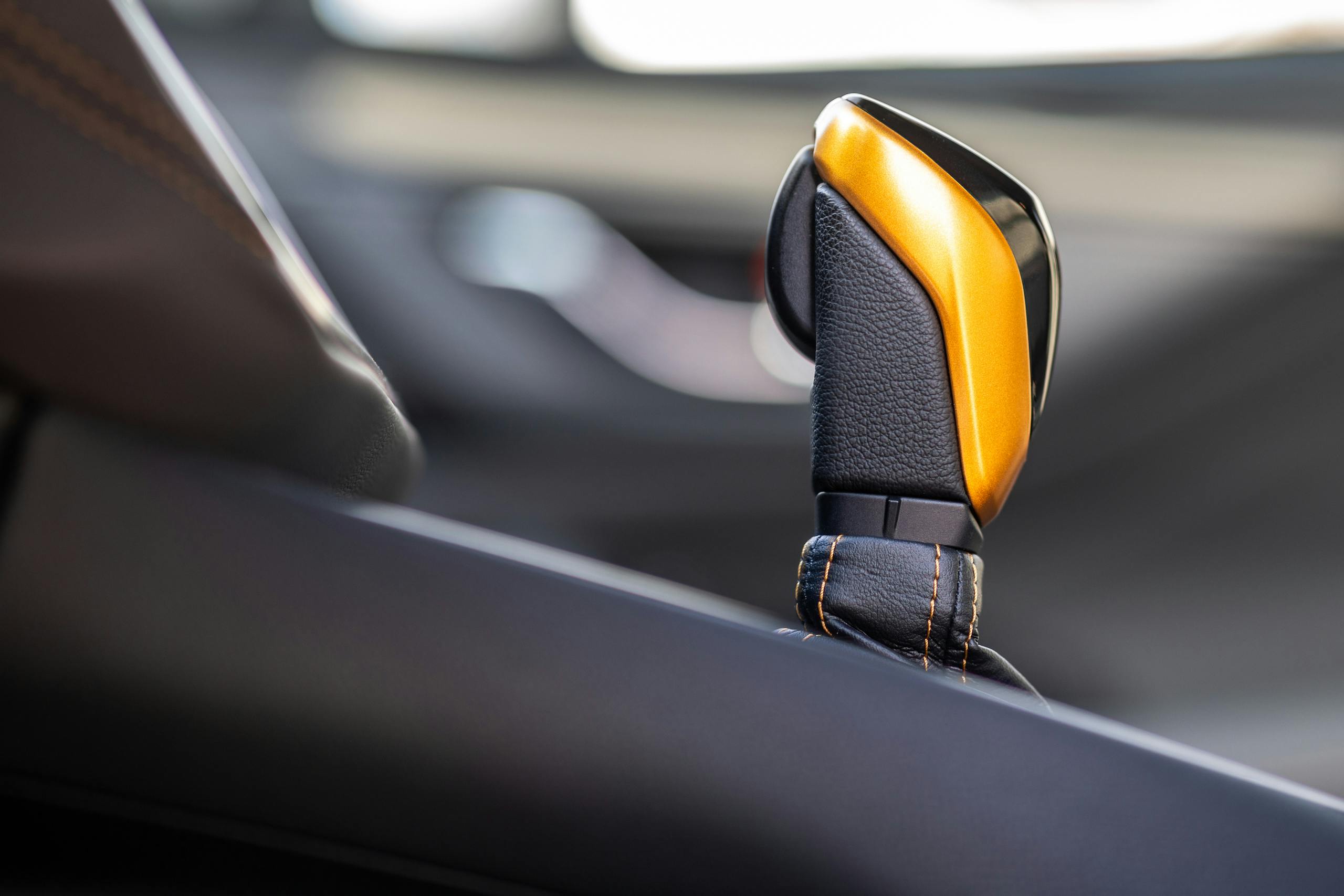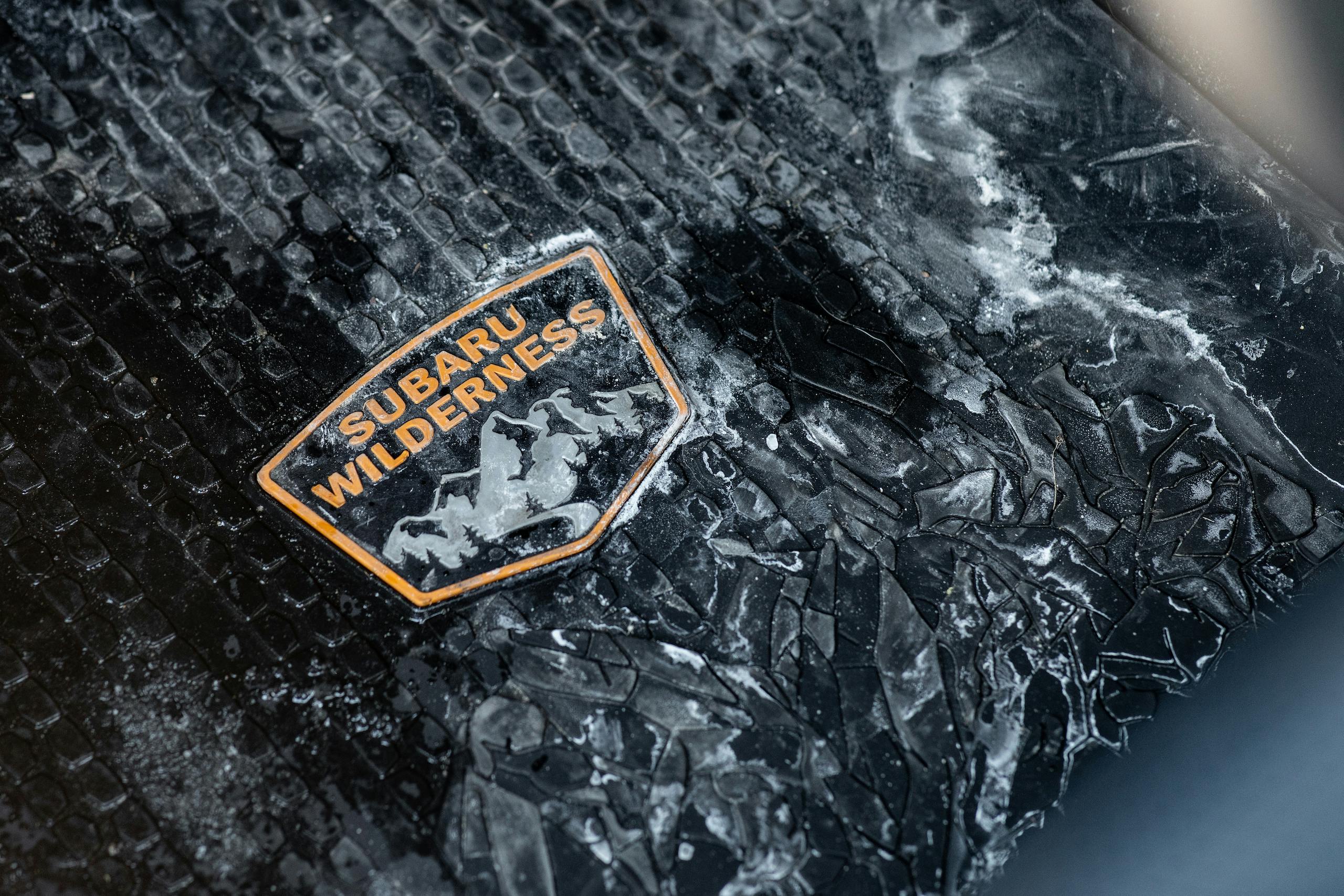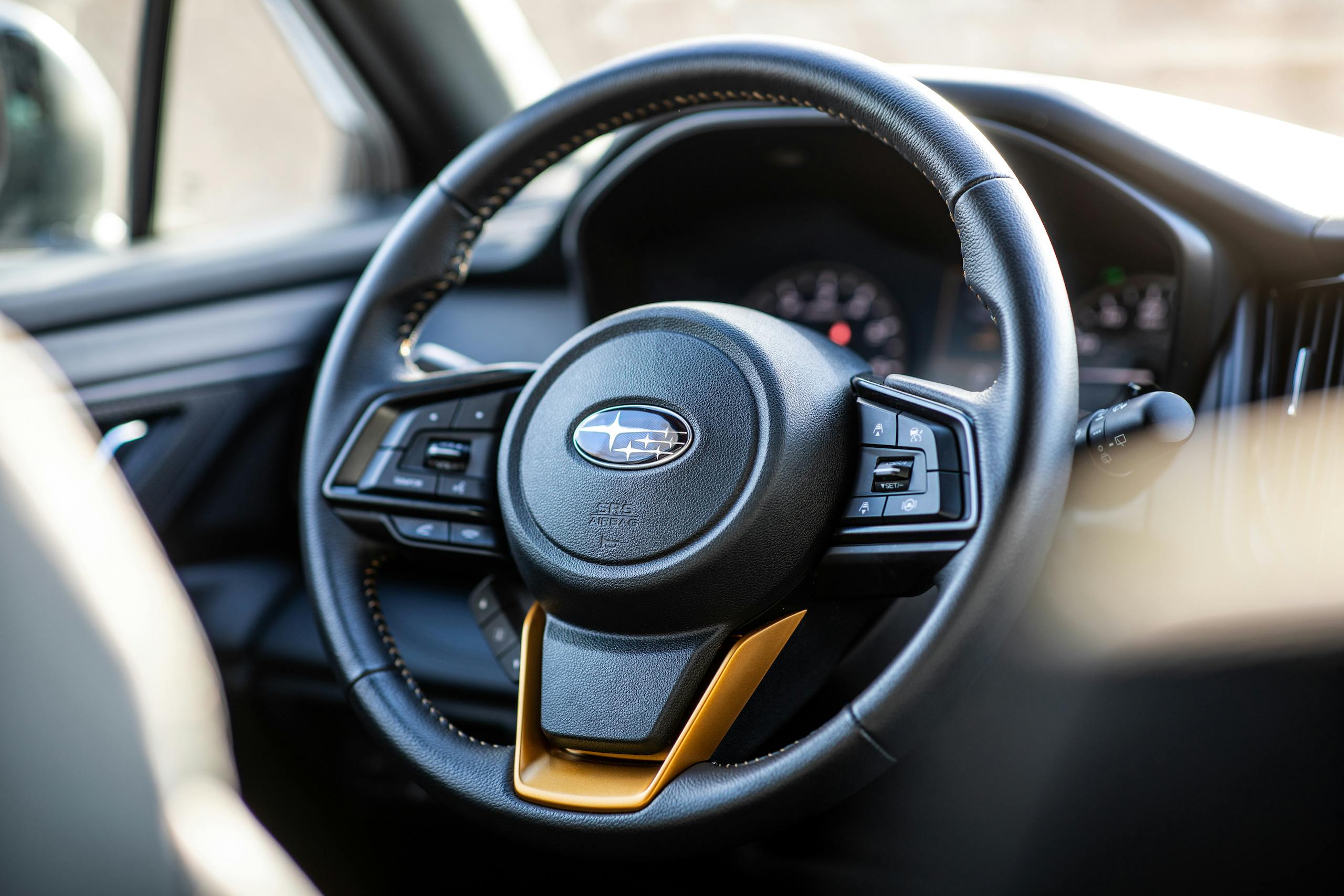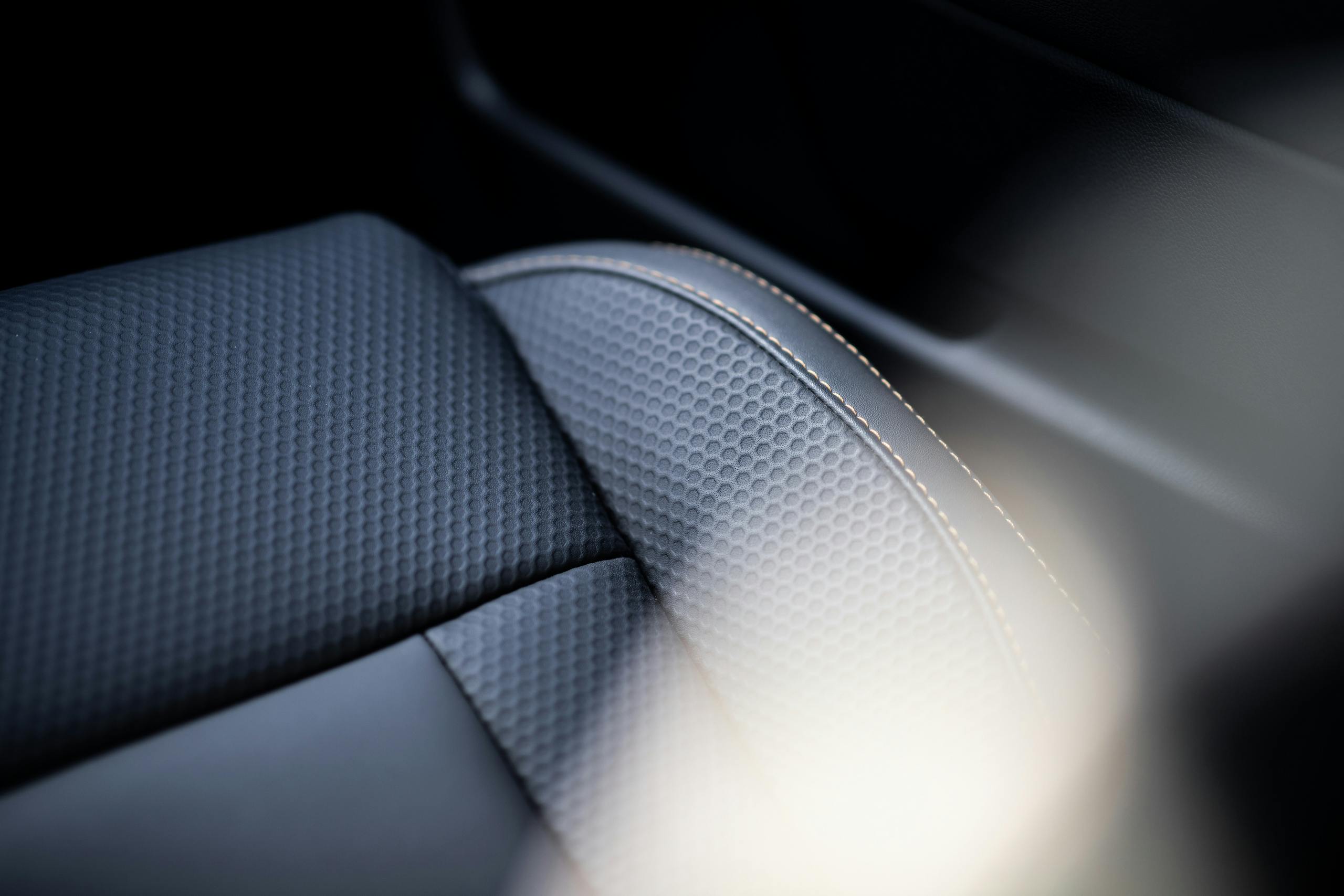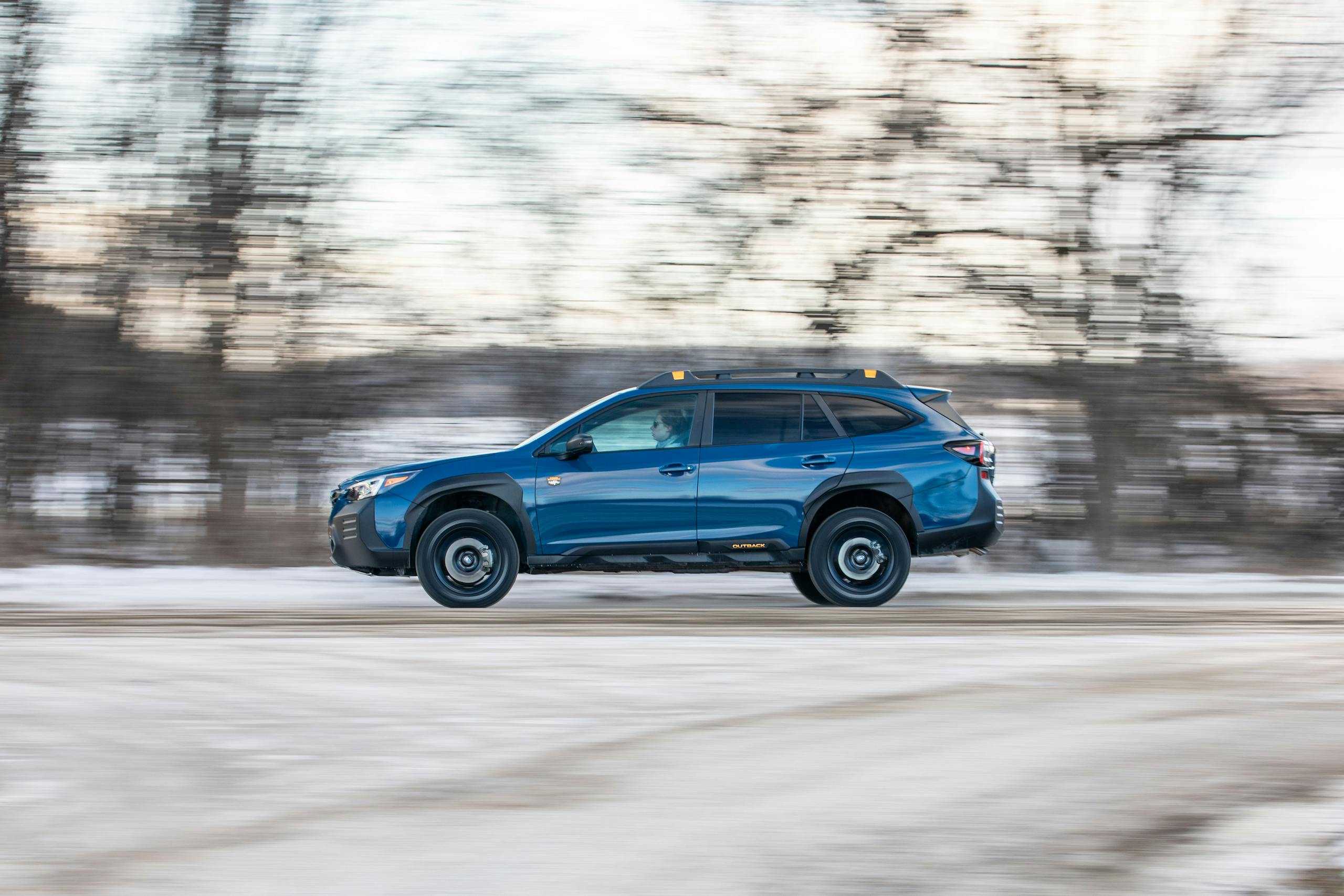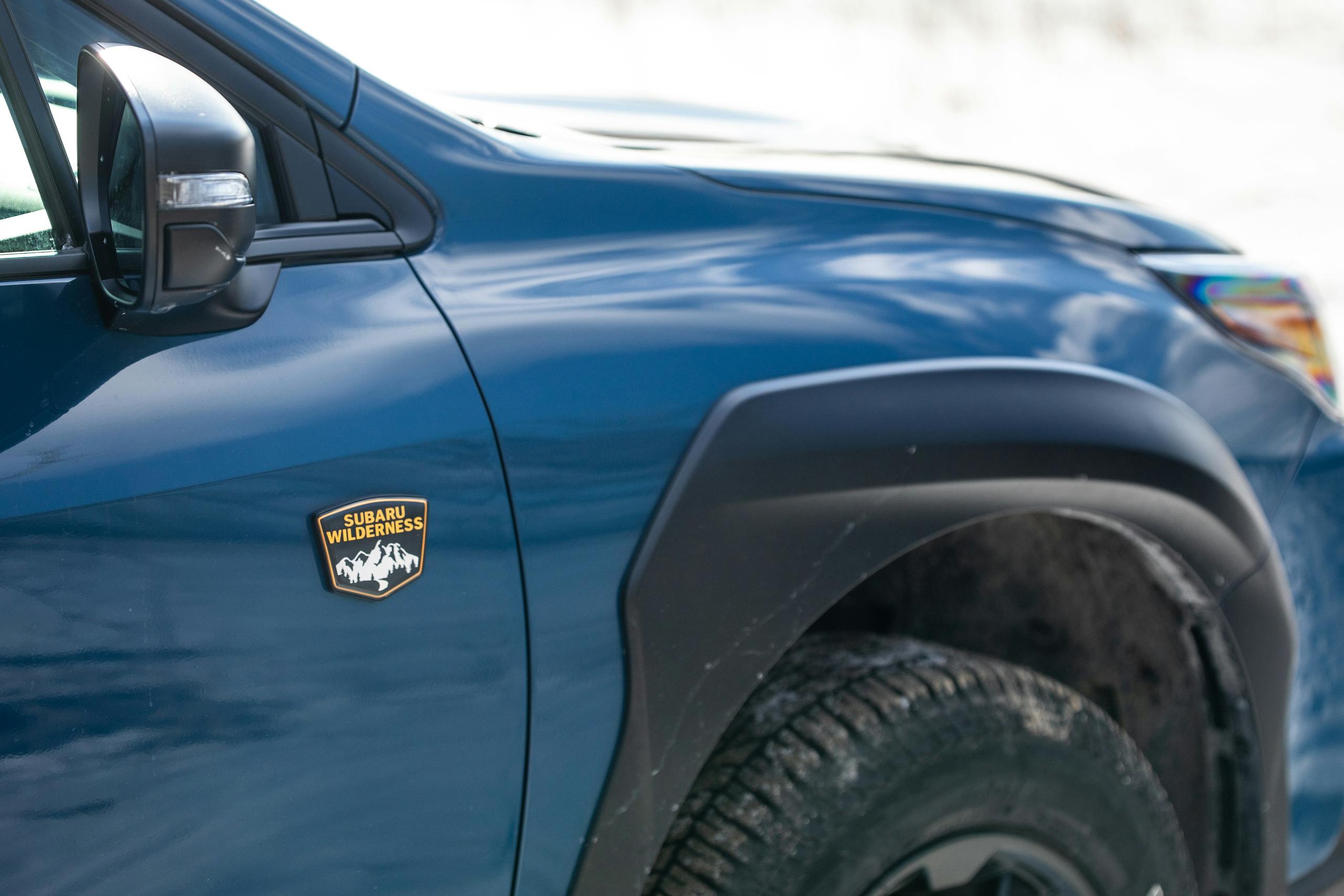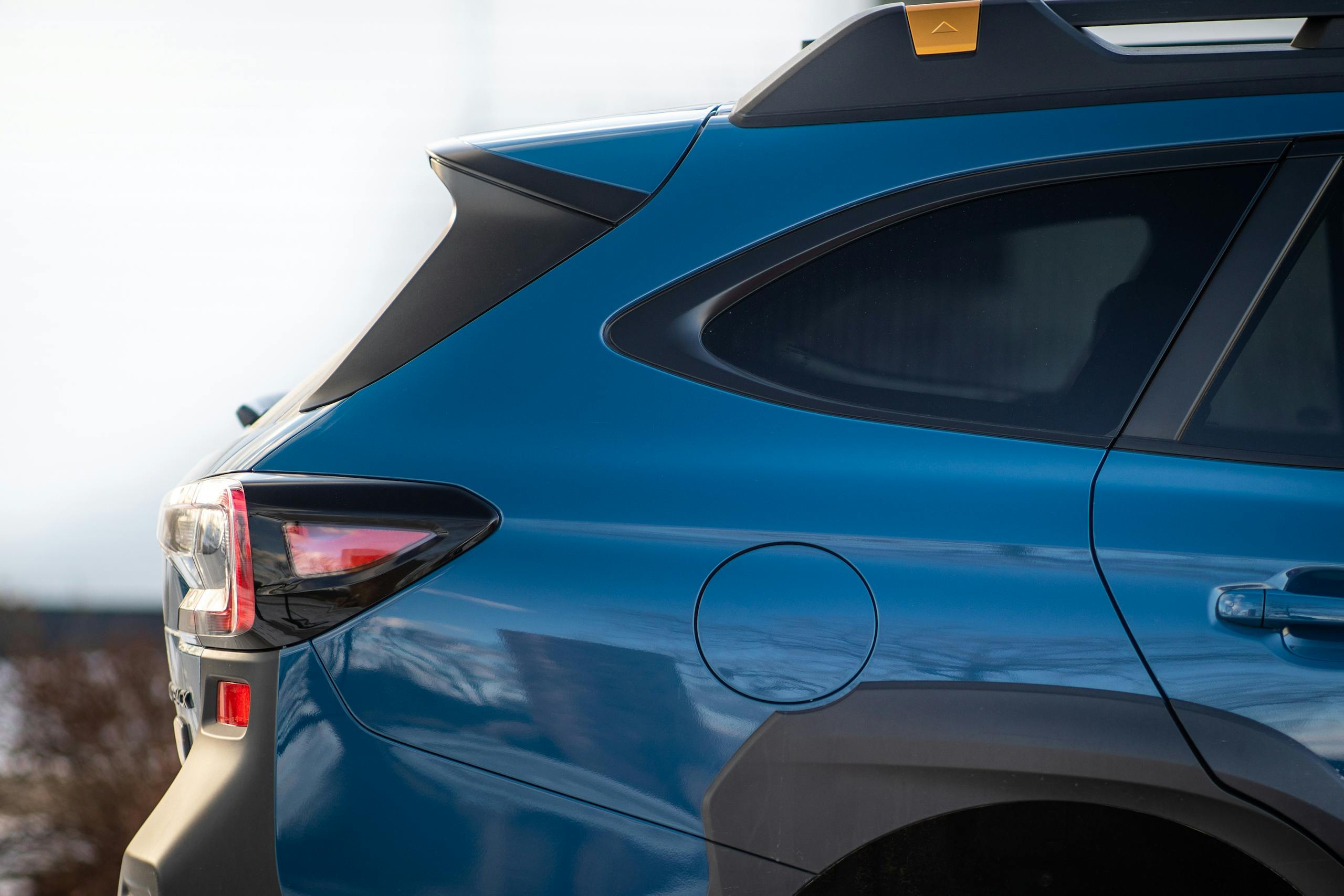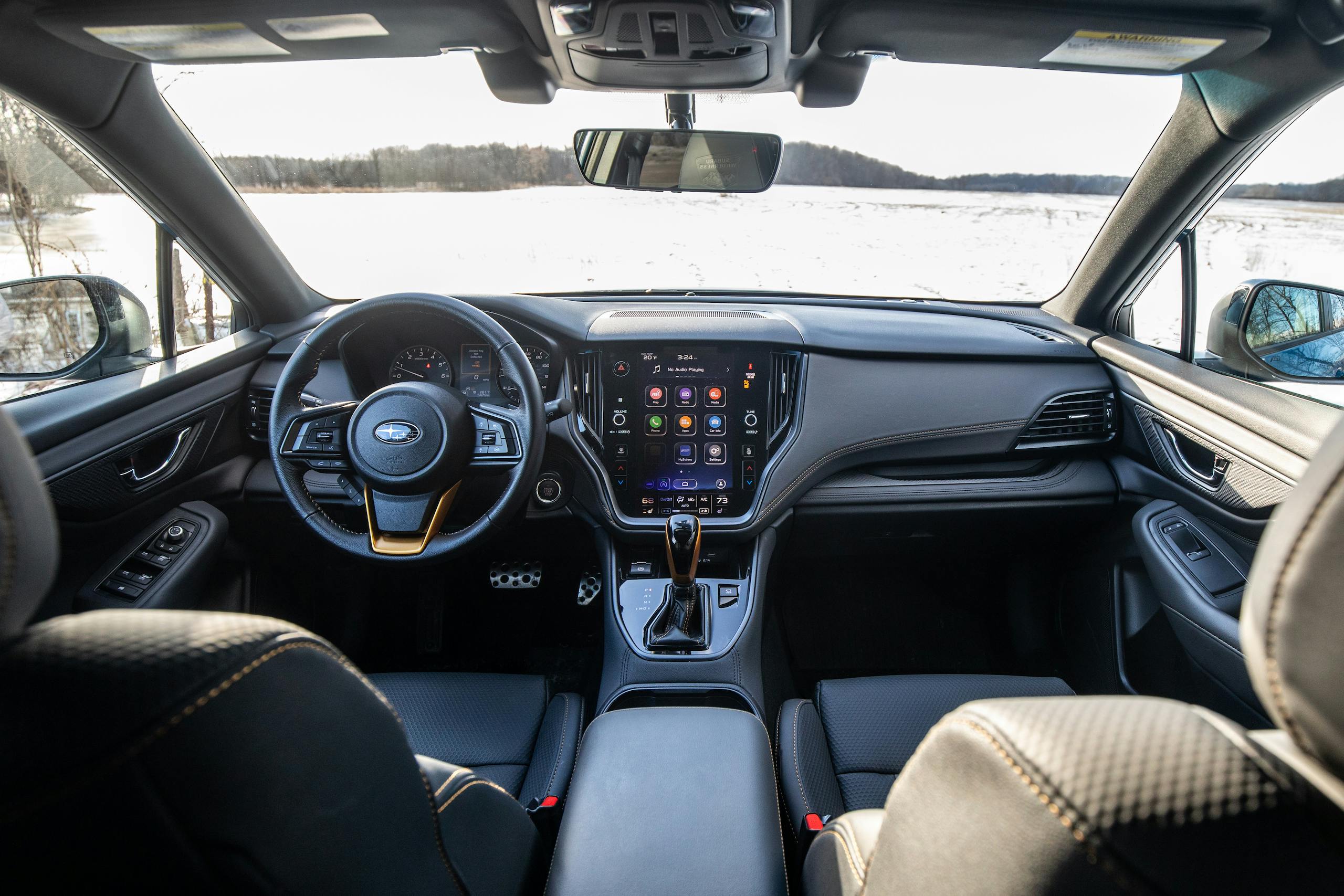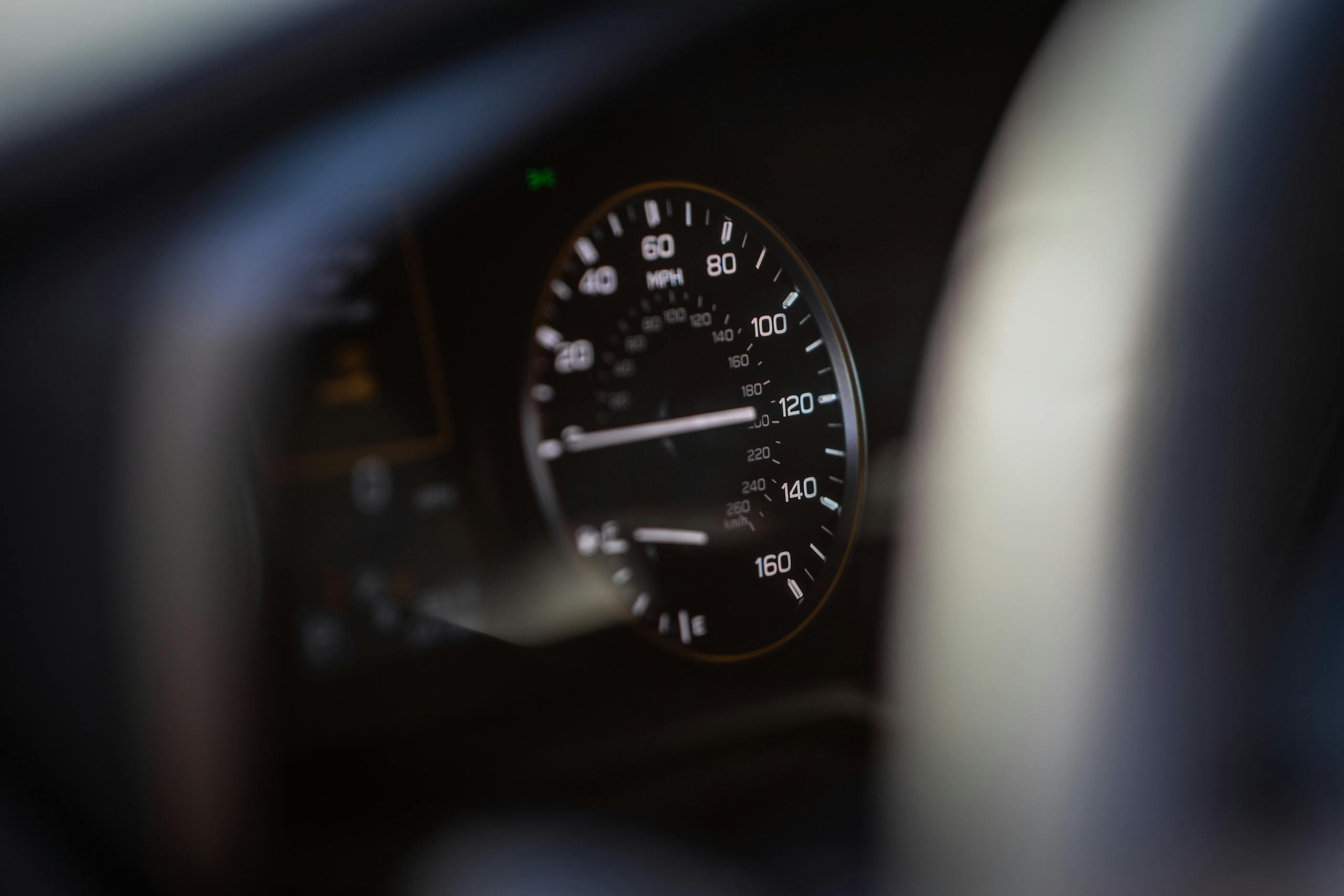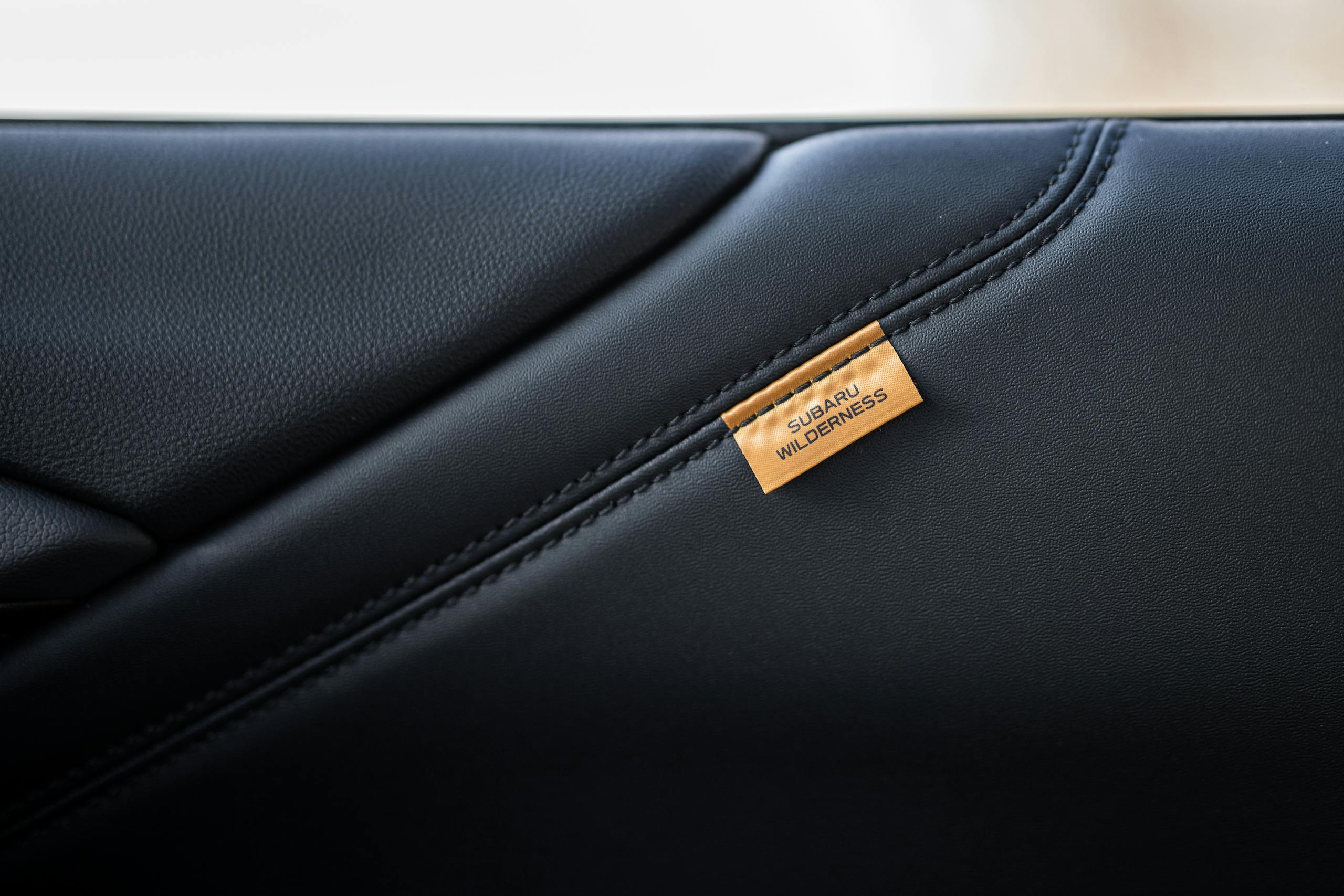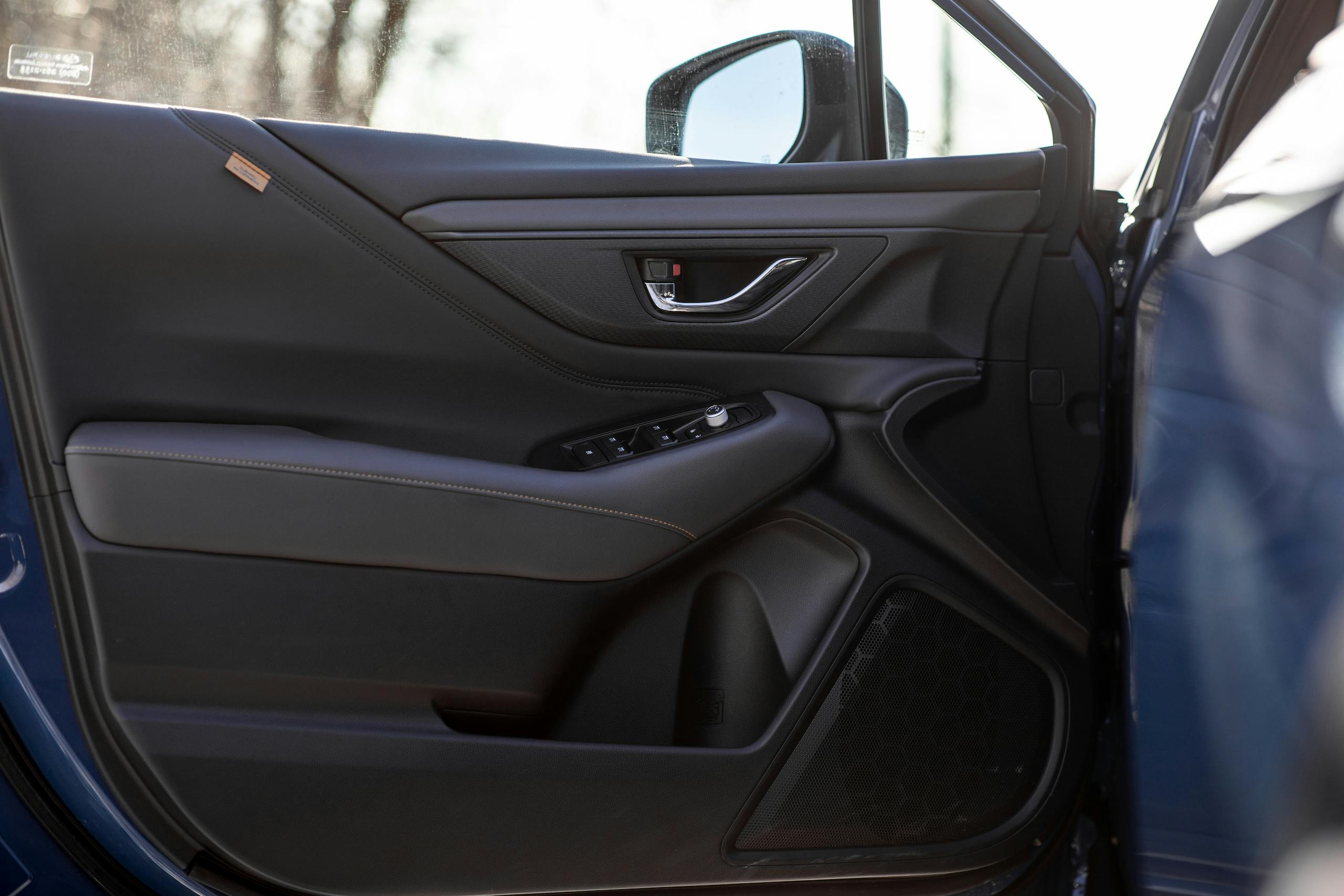Review: 2022 Subaru Outback Wilderness
At heart, Subaru’s Outback is an affordable, kid-hauling, all-wheel-drive long-roof unfazed by gravel, slush, and mud. The Wilderness trim shown here, new for the 2022 model year, doubles down on the Outback’s outdoorsy persona, adding a 0.8-inch lift and a roof rack with a 700-pound capacity. Fear not, though: The Subie’s golden-retriever-like amiability remains intact.
In this era of off-roading Lamborghinis and dune-pounding pickups, there is no better time to burnish a vehicle’s adventuresome persona. Hardly a Subie commercial wraps without showing a vehicle bumping along a rugged trail or parked on a sunny summit. The Outback Wilderness won’t leave any Wranglers shaking in their 35-inch boots, but that’s not this Subie’s job: It’s aimed at those who need a rugged family vehicle and can afford to pay extra for some off-road cool.
Our tester rang in at $39,965, a whopping $10,050 above a base Outback and just $1845 above a base Wilderness. The latter difference accounts for the Wildy’s only available option, a package that adds onboard TomTom-branded navigation (clunky and irritating), reverse automatic braking (poorly calibrated and occasionally irritating), and a sunroof (airy, welcome, quite nice). Shockingly, that $40,000 price tag places the Wilderness only sixth in the eight-model Outback lineup, beneath the leather-appointed and more fuel-efficient Limited XT and Touring XT. In addition to the lift and rack, the Wilderness gets the turbocharged, 260-hp flat-four and waterproof upholstery of the Onyx Edition XT, plus burly 17-inch alloys wrapped in Yokohama Geolandar all-terrains (more on these in a moment), a retuned continuously variable transmission, a wider rear track, edgy black fender cladding, and a smattering of yellow accents.
Though the lift makes this Outback appear a bit gawky in photos, the wagon has attitude in person. Up front, a wide honeycomb mesh replaces the base Outback’s grille slats and lower air intake. The bumper is also Wilderness-specific, dwelling atop a silver skid plate. There’s a lot of black plastic here, yes, but that also means lots of paint protection. The matte-black hood panel ties in nicely with the semi-gloss rims, and the contoured fender flares emphasize the increased ground clearance: 9.5 inches to the base Outback’s 8.7. The rear fascia sports another Wilderness-specific heavy-duty bumper, plus the smoked taillights that are so fetching on the lower-spec Onyx Edition XT. That chunky roof rack and some palm-sized Wilderness badges top things off.

The yellow accents continue in the interior, where they’re integrated into the shift lever and steering-wheel spokes. The clothing-like tags stitched into the door-panel seams are a bit fussy, as are the giant “Wilderness” logos pressed into the headrests, but they also serve to remind you that you’re in A Special Outback. Unfortunately, the cabin doesn’t quite live up to the sticker price; plastics abound, both rubberized and high-gloss, and the instrument cluster still incorporates analog gauges. The Wilderness model does get the Outback’s largest available touchscreen, but that flashy, 11.6-inch affair is mostly just frustrating. Don a pair of polarized glasses to survive January snow glare and half the display shimmers illegibly. Touch response is slow and inconsistent, and routine adjustments of things like heated seats, music, or navigation require substantial eyes-off-road time. CarPlay is only available via a wired connection.
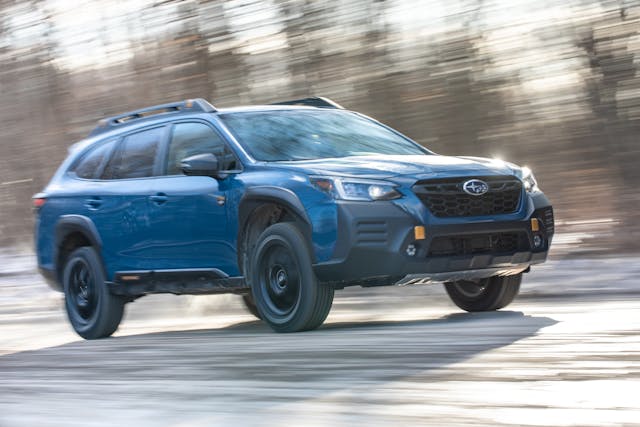
On the road, and especially from a dead stop, the Wilderness is an eager companion. That CVT works overtime to make sure the engine feels punchy off the line, and the rest of the driveline enhances that personality: Peak torque (277 lb-ft) arrives at 2000 rpm, and the 4.44 final-drive ratio is slightly shorter than the standard Outback’s 4.11. The downside is the rough stop/start system, which gives the impression that the Subaru is falling into a coma at stoplights and jerking awake in a full-body shimmy when brake pressure is released. Thankfully, this system can be disabled with a single tap on the center screen.
Stoplight antics aside, acceleration is confidence-inspiring, and body motions are surprisingly well controlled for a vehicle nearly 16 feet long. Forgiving dampers and tall tire sidewalls do an excellent job of insulating the interior from pockmarked pavement. The Subaru’s setup is so forgiving, in fact, that you tend to forget the abuse to which it’s being subjected. Surfing over a rutted, half-frozen dirt road at 45 mph is uneventful right until you bottom the suspension on a nasty hole. Highway tire slap is minimal, though the cabin does a poor job of muting engine noise. (Then again, you didn’t buy a Lexus, did you?) The lane-departure system is, as with all Subarus, beeptastic and slightly paranoid, but it’s easily defeated in the submenus.
So, should you get one? If your heart’s set on leather upholstery and superior fuel economy, you’ll want to look at the upper-shelf Limited XT or Touring XT. (Plus, you don’t have to deal with the Wildy’s slightly higher step-in and load height.) If you’re an Outback loyalist with an appetite for car camping, the factory warranty and ladder-style roof rack will likely charm you. (The rails and crossbars of previous Outbacks weren’t great for roof tents, and most aftermarket products wouldn’t clear the average garage ceiling.)
The price here is the greatest sticking point, and it helps to remember what that money can buy. If you’re willing to look outside the Subaru fold, Ford will build you an optioned-out Bronco Sport in Badlands trim for $38,985. That snub-nosed SUV not only boasts tidier proportions than the Outback Wilderness—trouncing it in approach, departure, and breakover angles—it also comes equipped with legitimate off-road kit, like a Dana twin-clutch rear diff that can mimic a locker, a front camera, Ford’s “off-road cruise control” system, and a rock-crawling mode with 18:1 crawl ratio. You also get a heated steering wheel—a piece of equipment bafflingly absent from the Outback Wilderness catalog.
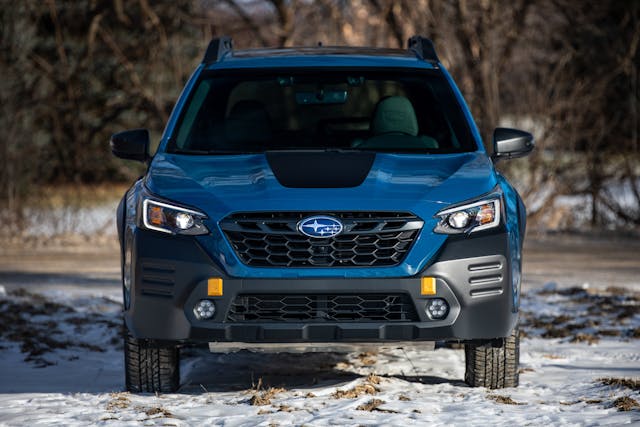
The easy move here is to dismiss the Wilderness as a poser. Its off-road capability is limited by that CVT, the relatively pedestrian underpinnings, the lack of a transfer case, the long-nose proportions. Subaru has done nothing here that the brand’s hard-core fans haven’t long assembled for themselves with the help of the aftermarket. It’s also not particularly cheap; sacrifice the Wilderness schtick and you can step up to Subaru’s three-row Ascent SUV for just $1000 more. Still, Subaru may have hit a subtle home run here: The company has taken a supremely practical vehicle, already beloved by young families, and made it even cooler.
If you want to rock-crawl, go buy a Jeep. If you want a gnarly Outback and don’t have time to build one yourself, the Wilderness is for you.
***
2022 Subaru Outback Wilderness
Price, base/as tested: $38,120 / $39,965 (base Outback: $28,070)
Highs: The attitude, the 700-pound-rated roof rack, the waterproof upholstery, the fact that it’s essentially the same Outback we know and love.
Lows: Glare-happy infotainment screen, engine noise that permeates the cabin, shuddery start/stop, not a screamin’ deal like lower Outback trims.
Summary: A factory-backed gift to the Subaru die-hards that preserves hallmark Outback virtues like usability and practicality.

